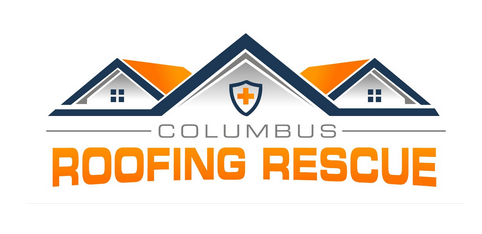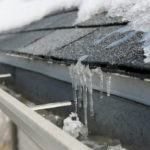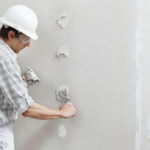
A Guide to Knowing When It’s Time to Replace Your Roof
Is it time to replace your roof? The thought of a roof replacement can be daunting, but knowing when it’s necessary is crucial for the safety and longevity of your home. A deteriorating roof can lead to leaks, water damage, and structural issues if not addressed. This comprehensive guide will walk you through the telltale signs that indicate it’s time for a roof replacement. We will cover everything from missing shingles and water stains to sagging and aging roofs.
We will also delve into the different types of roofing materials available and help you choose the best option for your specific needs. Don’t wait until a small problem becomes a major headache. With our expert advice, you’ll be armed with the knowledge to make an informed decision and protect your home for years. So, let’s dive in and discover when it’s time to say goodbye to your old roof and embrace a new one.
Signs that indicate your roof needs replacement
Your roof is one of the most important components of your home’s structure, and keeping it in good condition is essential. Several signs indicate it’s time to replace your roof. One of the most obvious signs is missing or damaged shingles. If you notice shingles that are cracked, curling, or completely missing, it clearly indicates that your roof needs attention. These issues can lead to water leaks and further damage if left unaddressed. Another sign to look out for is water stains on your ceiling or walls. These stains are often a result of a roof leak and should not be ignored.
Additionally, if you notice any sagging or drooping areas on your roof, it’s a sign of structural damage and should be addressed immediately. Other signs include excessive granules in your gutters, mold or mildew growth, and a roof that is nearing the end of its expected lifespan. If you observe any of these signs, it’s time to seriously consider replacing your roof.
Replacing your roof in a timely manner is crucial to avoid further damage and costly repairs. Ignoring the warning signs can lead to more extensive water damage, compromised structural integrity, and even health issues caused by mold growth. A leaking roof can infiltrate your attic, insulation, and walls, leading to rot, mold, and mildew. These issues not only affect the structural integrity of your home but also pose health risks to you and your family. Additionally, a damaged roof can result in higher energy bills as the insulation is compromised, allowing heat or cold air to escape. By replacing your roof when needed, you can prevent these problems and maintain a safe and comfortable living environment.
Factors to consider before replacing your roof

Before embarking on a roof replacement project, there are several factors you should consider. First and foremost, assess the overall condition of your roof and determine whether a repair or replacement is necessary. A repair might be sufficient if the damage is limited to a few areas and the rest of the roof is in good condition. However, if the damage is widespread or your roof is nearing the end of its lifespan, a full replacement is likely necessary. Take into account your budget, as a roof replacement can be a significant investment. It’s important to weigh the replacement cost against the potential long-term benefits and savings, such as increased energy efficiency and reduced maintenance costs.
Additionally, consider the climate and weather conditions in your area. Certain roofing materials are better suited to withstand harsh weather conditions, while others may deteriorate more quickly. Finally, think about the aesthetic appeal of different roofing materials and how they will complement the style of your home. By carefully considering these factors, you can make an informed decision that meets both your practical and aesthetic needs.
Different types of roofing materials
When replacing your roof, you have many roofing materials to choose from. Each material has its advantages and disadvantages, so it’s important to understand your options. One popular choice is asphalt shingles, which are affordable, easy to install, and come in various colors and styles.
They are also durable and can last up to 30 years with proper maintenance. Another common option is metal roofing, known for its longevity and durability. Metal roofs can last 50 years or more and are highly resistant to fire, wind, and hail. They are also energy-efficient and can help reduce cooling costs. Other materials to consider include wood shingles, which provide a natural and rustic look but require more maintenance, and slate tiles, which are extremely durable and can last over 100 years.
Additionally, synthetic roofing materials are available that mimic the look of traditional materials while offering increased durability and ease of installation. By understanding the characteristics of each roofing material, you can choose the one that best suits your needs and budget.
Choosing the right roofing contractor

Replacing a roof is a complex and labor-intensive task that requires professional expertise. Choosing the right roofing contractor ensures a successful and long-lasting roof replacement. Start by researching local contractors and checking their credentials. Look for contractors who are licensed, insured, and have a good reputation in the industry. Ask for recommendations from friends, family, or neighbors who have recently had their roofs replaced.
Reading online reviews and checking the contractor’s website for testimonials is also a good idea. Once you have a shortlist of potential contractors, schedule consultations, and ask for detailed estimates, a reputable contractor will assess your roof, explain the necessary work, and provide a clear breakdown of the costs. During the consultation, don’t hesitate to ask questions about the contractor’s experience, warranties, and project completion timeline. By carefully vetting and selecting a qualified contractor, you can ensure that your roof replacement is done professionally and satisfactorily.
The process of roof replacement
Understanding the roof replacement process can help alleviate any concerns and prepare you for what to expect. The first step is to remove the old roof, which involves stripping off the existing shingles, underlayment, and flashing. This is typically done using specialized tools and equipment. Once the old roof is removed, any necessary repairs to the underlying structure are made. This may include replacing damaged plywood or reinforcing weak areas. The next step is to install the underlayment, which acts as a moisture barrier and provides an additional layer of protection.
Once the underlayment is in place, the new roofing material is installed. Depending on the chosen material, this can involve laying shingles, attaching metal panels, or securing tiles. Finally, the flashing and other finishing touches are installed to ensure a watertight seal. Throughout the process, the roofing contractor will take measures to protect your property and clean up any debris. By understanding the steps involved, you can have peace of mind knowing what to expect during the roof replacement process.
Roof replacement cost and budgeting
The roof replacement cost can vary depending on several factors, including the size and complexity of your roof, the chosen roofing material, and the contractor’s labor fees. On average, a roof replacement can cost between $5,000 and $10,000, but this can increase for larger homes or more expensive materials. It’s important to budget for this expense and consider it a long-term investment in the value and integrity of your home.
When budgeting for a roof replacement, consider the lifespan of the chosen material. While a cheaper material may save you money upfront, it may need to be replaced sooner, resulting in higher long-term costs. Additionally, factor in the cost of any necessary repairs to the underlying structure and the removal and disposal of the old roof. Setting aside some contingency funds for unexpected expenses that may arise during the project is also a good idea. By budgeting appropriately, you can ensure you have the necessary funds to complete the roof replacement without compromising quality.
Roof maintenance tips to prolong its lifespan
Once you’ve invested in a new roof, it’s important to properly maintain it to prolong its lifespan and ensure its continued performance. Regular roof maintenance can help identify and address any small issues before they become major problems. Start by inspecting your roof at least once a year, paying attention to any signs of damage or wear. Trim any overhanging branches that could potentially damage the roof during storms. Keep gutters and downspouts clean and free from debris to prevent water buildup. Remove any leaves, moss, or algae that may accumulate on the roof, as they can trap moisture and cause damage over time.
It’s also important to check for any loose or damaged shingles and replace them promptly. Finally, consider applying a protective coating or sealant to your roof to enhance its durability and resistance to the elements. By following these maintenance tips, you can extend the lifespan of your roof and minimize the need for early replacement.
Common mistakes to avoid during roof replacement
While a roof replacement project can be daunting, knowing the common mistakes to avoid can help ensure a smooth and successful process. One common mistake is hiring an unqualified or inexperienced contractor.
Always choose a reputable contractor with proper credentials and a track record of successful projects. Another mistake is rushing the decision-making process. Take the time to research and compare different roofing materials and contractors before making a final decision. Additionally, be wary of lowball quotes that seem too good to be true. These quotes may indicate subpar materials or poor workmanship, resulting in costly repairs. Obtaining all necessary permits and adhering to local building codes is also important. Failure to do so can lead to fines and complications during the project.
Finally, avoid making changes or additions to the project once work has begun, as this can cause delays and additional expenses. By being aware of these common mistakes, you can confidently navigate the roof replacement process and avoid unnecessary headaches.
Conclusion
Knowing when it’s time to replace your roof is crucial for the safety and longevity of your home. By understanding the signs that indicate the need for a roof replacement, you can take proactive measures to protect your home from further damage. Consider the factors involved in a roof replacement, such as budget, climate, and aesthetics, to make an informed decision that meets your needs. Choose a qualified roofing contractor who can guide you through the process and ensure a successful roof replacement.
Understand the steps involved in a roof replacement and budget accordingly to avoid any financial surprises. Once your new roof is installed, practice regular maintenance to prolong its lifespan and prevent costly repairs. By avoiding common mistakes and staying proactive, you can enjoy the peace of mind with a sturdy and reliable roof. Don’t wait until it’s too late – take action now and protect your home for years.



